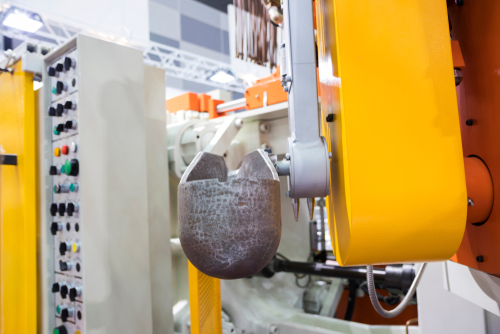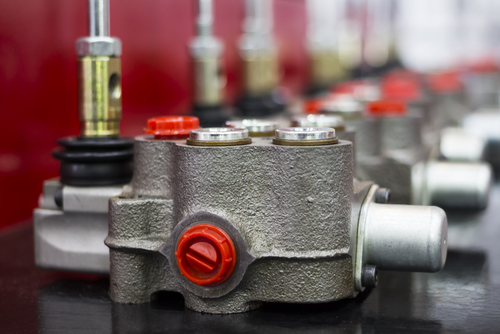 Die-cast aluminum is the kind of aluminum in which metals are molted in mold cavities under high pressure. In aluminum die casting, molten metals are injected to metal dies, then cooled in the die cavities, and turned into a solidified form. The molten metals sit in the cavities for longer for the purpose of cooling. As such, the preferred shapes are made in the metallurgical process.
Die-cast aluminum is the kind of aluminum in which metals are molted in mold cavities under high pressure. In aluminum die casting, molten metals are injected to metal dies, then cooled in the die cavities, and turned into a solidified form. The molten metals sit in the cavities for longer for the purpose of cooling. As such, the preferred shapes are made in the metallurgical process.
Metals are molted in the steel mold cavities using the high-pressure die casting technique. In the US markets, often the term is shortened to pressure die casting. In the past, the process was done with low-pressure injection. Although, the high-pressure approach is more common now since it can squeeze the die-cast aluminum into the desired sizes as well as shapes. To make a smooth casting, the metal is injected under high pressure as well as speed. This high-pressure level is maintained until it turns solid. After it is solidified, the casting is ejected.
The component or object made by subjecting the metal in the molten form to this metallurgical process is called a ‘casting’. The same term is interchangeably used to refer to the process that goes into the object’s making. Sometimes, texts or online materials do not shorten it to casting, instead describing it as aluminum die casting. The manufacturing technique is regarded as non-expendable, one that can be used repeatedly to make castings of different sizes, shapes, as well as thickness. In the process, an array of shapes can be produced with a high degree of dimensional accuracy as well as attractiveness. These castings can be made at high volume production runs.
Now, aluminum die casting is regarded as an industrial process for the function of producing aluminum parts for sale or equipment units or any other industrial or commercial production. Today, it is considered the easiest technique to make aluminum components as the material is melted inside the designated molds in order to make the preferred shape, size, as well as thickness. The process is vital in producing metal components with details as well as quality aspects specified by the client.
Benefits of Aluminum in Die Casting
The die casting process involves complex machinery, a contraption rather with the filling system, movable plates, and ejector die part mounted onto the movable platen. The metal object can be produced by means of either a cold chamber or hot chamber technique. A lot of the machinery and energy use amounts to high capital expenditure for die casting companies or die casters, involved in the production. Therefore, the aluminum casting process tends to be used to manufacture high volume components. Hundreds of parts can be made in a short time span.
Although the capital expenditure limits the process to high-volume runs, it is an inherent strength of aluminum die casting. The ability to make hundreds of metal parts in a relatively short time span is a boon for different segments, where the demand for aluminum is quite high. For example, automobiles, building and construction industries are those. The market experts say that the aluminum die casting market growth will be driven by the demands from those sectors.
The high-pressure casting process is also cost-efficient, owing to its speed as well as accessibility, which make it perfect for manufacturing on a budget. The method is ideal for parts that  necessitate thin walls, as low-pressure aluminum die casting has minimum wall thresholds. There are a few more distinct benefits to the high-pressure approach. One of its most important advantages is that it manufactures lighter components, with even more aluminum surface finishing choices than what is achievable with other die-cast alloys.
necessitate thin walls, as low-pressure aluminum die casting has minimum wall thresholds. There are a few more distinct benefits to the high-pressure approach. One of its most important advantages is that it manufactures lighter components, with even more aluminum surface finishing choices than what is achievable with other die-cast alloys.
The aluminum or a part made of it can endure the highest operating temperature of all those alloys. Furthermore, cast aluminum parts are corrosion resistant and versatile; they retain high dimensional stabilities with thin walls as well as can be employed in just about any segment. Some sectors benefit from the unique properties of aluminum by putting it to use in different applications, though.
When used in, say, a car’s interior or exterior, lightweight aluminum die cast parts make it lightweight, too. By contributing to the weight-saving prerequisites of the original equipment manufacturers in the automobile industry, aluminum castings enhance fuel efficiency.
Aluminum is also used in a wide range of infrastructure and networking equipment in the telecommunications and computing segments since radio frequency filter boxes, as well as housings, necessitate heat dissipation. On the other hand, in handheld devices, aluminum castings offer RFI/EMI shielding, rigidity, as well as durability with minimal weight. Owing to the excellent electrical performance as well as shielding properties of aluminum, even in high-temperature environs, die-cast aluminum is perfect for electronic connectors as well as housings.
Besides, do you know more than ninety-five percent of the castings produced in the North America market are made of recycled aluminum? This reduces active mining. As such, the manufacturing process contributes to sustainability and Pacific Die Casting supports that to the core.
This alloy is:
- Light weight
- High dimensional stability for complex shapes and thin walls
- Good corrosion resistance
- Good mechanical properties
- High thermal and electrical conductivity
- Great strength at high temperatures
Are you unsure which metal to cast your parts? Get a Quote now on a part.
